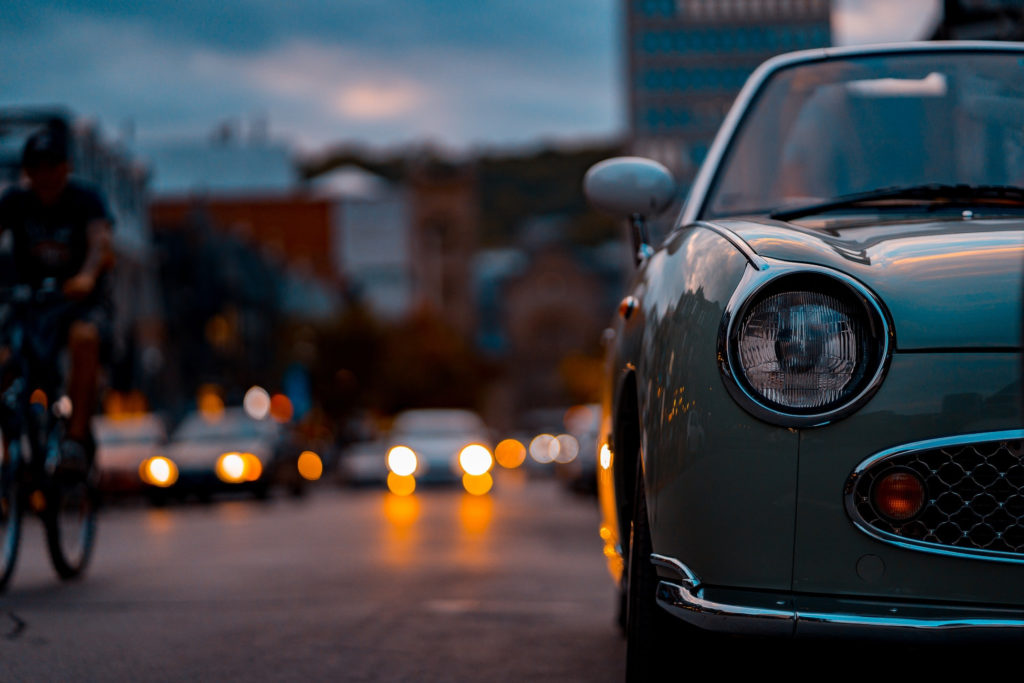5 essential automotive components that rely on optical engineering
Optical design is indispensable in a wide range of industries, including the automotive industry. Optical devices are integrated into many critical automotive systems; transportation has always relied on optical engineering – driving would be awkward without the headlamps and turn signals.

Photo by Tolulope Akanni
Modern automated vehicles rely on optics even more heavily. In our work as an optical design consultant we’ve worked on quite a few automotive related projects. Here are five:
Headlamps
Headlamps are what first comes to mind when thinking about the application of optics in the automotive industry. Even though the basic headlamp function is to illuminate the road ahead, as specified by the longstanding Department of Transportation standards, they are increasingly used to accent the vehicle design. Besides, optical engineering advances increase their effectiveness. Novel tech, such as glare-free or adaptive high beams, increases the seeing range while protecting other road users at the same time.
The bulbs used within the headlamps are made of a wide variety of materials. Those range from tungsten-halogen to more modern solutions such as high-intensity discharge (HID), LED, or lasers. The former, tungsten-halogen, is used to produce one of the most popular headlight bulb types – H4 and H7, covering over 80% of the market.
Updating the aesthetics while meeting government standards, and introducing new materials and light sources, requires extensive illumination design. The optical engineers often use non-sequential ray tracing in programs, such as Zemax, to ensure that all the criteria are met.
Turn Signal lights
Turn signal lights enable the communication between the drivers, increasing road safety. Even though cars must have turn signals, as reported by the Department of Transportation , half of the drivers fail to signal when changing lanes. Various designs are available, ranging from the regular flashing turn signal lights to modern sequential turn signals. As suggested by their name, the latter provides the turn-signal by sequentially lighting the elements. The result is an attractive light motion, which also provides a more intuitive signal to other drivers.
In addition to providing attractive solutions, optical engineers work towards improving the turn light durability, color, and effect on road safety. Their importance is neatly illustrated by the National Highway Traffic Safety Administration study[E3] , which suggested that rear signal color significantly affects the possibility of a collision.
Dashboard controls and stereo button light pipes
Modern vehicles utilize a wide array of sensors to collect data about the vehicle and its surroundings. The data from these sensors needs to be provided to the driver in a way that is instantaneously understandable. For this reason, modern dashboards include dozens of lights and light pipes showing the vehicle status and possible malfunctions (i.e., engine temperature or oil pressure).
The dashboard controls greatly influence how the customer views the car, thus often needing the interdisciplinary approach. While the designers draft the layouts, optical engineers use ray tracing to simulate the design concepts of industrial design engineers.
In any car, multiple color light pipes or indicator lites need to be designed in non sequential raytracing programs like Zemax.
Backup cameras
Blind spots cover almost half of the outer vehicle perimeter. When combined with the increasing urbanization and growing vehicle numbers, driving in the cities becomes difficult. Thus, backup cameras are installed to help the driver by eliminating the rear blind spot. First proposed in the concept cars of the late 1950’s and widely accepted in the 1990s, backup cameras are an invaluable tool.
Fisheye lenses are generally applied to provide the driver with a panoramic rear-view. The resulting image is mirrored to give the driver more intuitive information and projected on the monitor in the front. Advances in optical engineering allow the manufacturers to produce more compact cameras, while also increasing their resolution and light sensitivity.
In parallel with the camera development, the quality of vehicle screens and computers is on the rise. However, besides designing needed lenses and mirrors, optical engineers also optimize the rearview display by including Object Detection (OD) algorithms. OD algorithms make it possible to integrate even more functionalities, such as augmented reality (AR).. By introducing AR to the backup camera system, vehicle projects virtual elements to the screen to help the driver park, enhancing both the experience and safety.
LIDAR
LIDAR is used to measure the distance and position using light. The object is illuminated using the laser beam, and the reflection is measured. By collecting a large number of points, which is possible in a short time, it is possible to generate the 3D model. Hence, LIDAR technology is one of the cornerstones for the development of autonomous vehicles[ , as 3D models provide them with the necessary information about their surroundings. Our company provided zemax optical design for lenses used in the first self driving cars.
LIDAR also significantly improves passenger safety. Due to its inherent characteristics and integrated infrared light source, it works in zero ambient light. By inspecting the surroundings many times in a second, the on-board computer has information in real-time and can act quickly to avoid collisions. When compared to a human, such a vehicle has superior vision and reaction time. It is no surprise that Volvo aims to start producing LIDAR-equipped vehicles during 2022, thus moving towards automated driving.
Unfortunately, there are a few technical standards related to LIDAR, with US National Geospatial Program (NGP) being one of the few available documents. Thus, having the necessary knowledge about the sensors, light, and lenses, the optical engineers have a critical role of improving the LIDAR reliability, accuracy, and performance.















